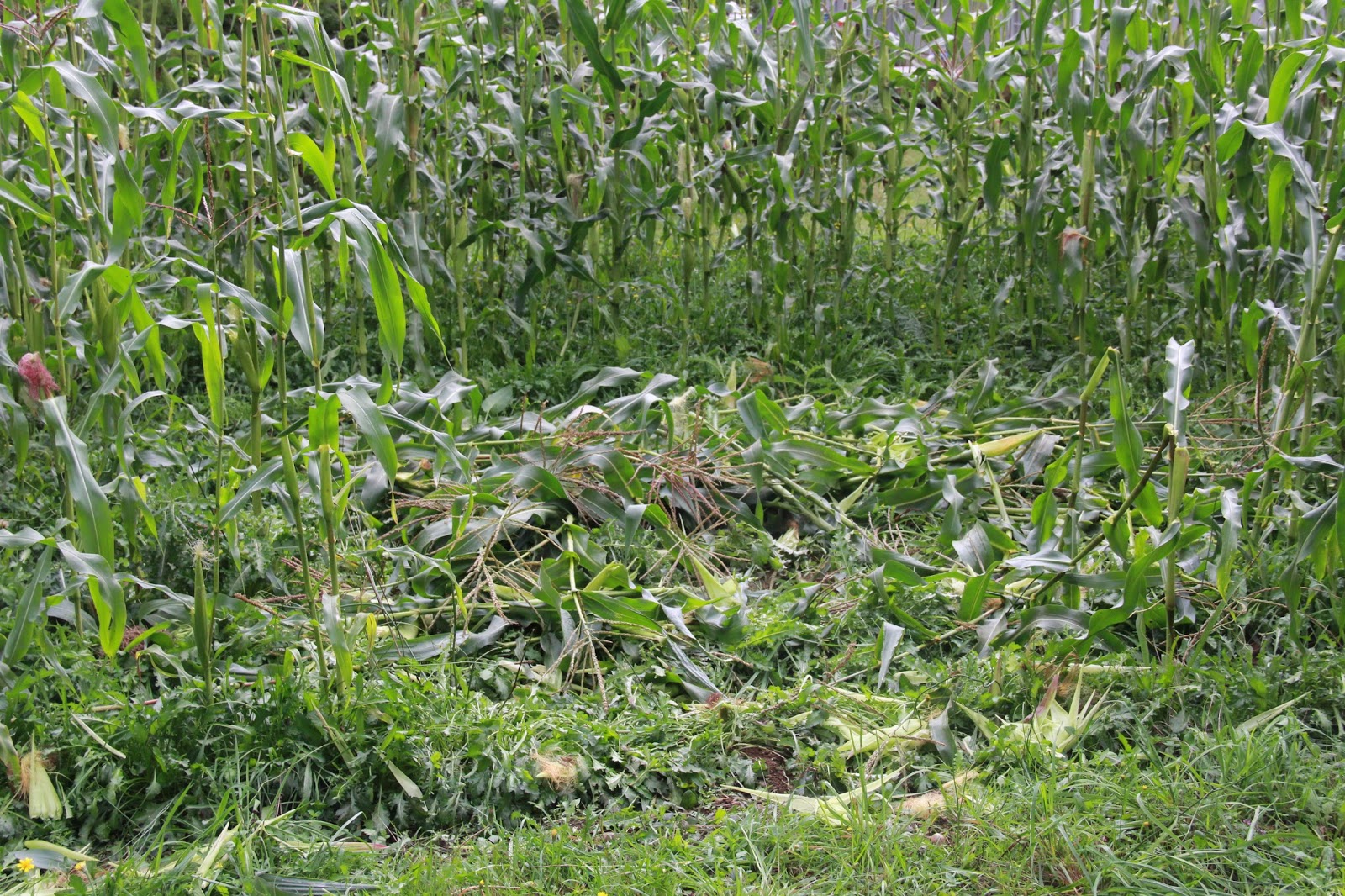The last time we raised pigs in the winter of 2011-2012 we used 12,400 pounds of feed for 13 pigs. That's approximately 950 pound per pig to go from wean to market. It also took them 6 months to go from wean to market. This seems very inneficient!
Storey's Guide to Raising Pigs (page 50) by Kelly Klober says that it takes between 650 to 750 pounds to take a pig from 40 pounds to market.
Small-scale Pig Raising (page 4) by Dirk van Loon assumes 700 pounds of feed to take a pig from wean to 220 pounds. My pigs dressed out to 180 pounds which means, according to
this website, that they had a live weight of approximately 250 pounds. 30 more pounds of gain would take about 100 pounds of feed. Regardless I used 100 to 200 pounds more feed that I should have needed to. Now assuming today's price of .26 per pound for feed, $26 to $54 per pig wasted times 13 pigs equals $338 to $702 wasted. Yikes! Obviously I missed the mark by a long shot so this go around I am making some changes.
So what factors lead to this inefficiency?
1. Home made feeder was letting to much feed out.
2. Pigs were standing in mud while eating so any food that hit the ground was unrecoverable
3. Feeder was not well protected from the elements so excessive food in the trough of the feeder got wet and became unpalatable.
4. Not enough bedding when raising pigs in winter so they shivered off many calories.
 |
| Wasteful feeder |
In this picture you can see a couple of bad things. First, the pigs standing in the feeder to more easily reach the feed. Sometime after this picture I did put a 6"x6" landscape timber I had sitting around in front of the feeder for them to stand on. Muddy trotters in the feed trough doesn't help the feed stay fresh. Notice all the feed on the ground... and this is when it was still relatively dry out. By this point the pigs have ripped the lids off the feed trough. What a mess.
 |
| Homemade pig feeder when new |
As you can see in this picture the trough had lids at one point, but the pigs were too rough with them and they ended up getting ripped off. Also note the the giant gap between bottom of the trough and bottom of the storage hopper. This let way too much feed out.
 |
| The whole picture |
The flip top roof was good for
filling but did not provide nearly as much protection as you might think it would!
For this round of pigs I have built a deck for them to stand so they can reach in the feeder easier and be out of the muck. The feeder is now also in the hoop house so the only moisture that can get in the trough is from the pigs bringing their wet snouts from the waterers or from condensation from the tarp that covers the hoop house.
 |
| Feeder after modifications |
So here it is after modifications. I added a 2 by 6 across the bottom so now the opening is only 1 1/2 inches from the floor of the trough. With it also being 1 1/2" thick it really reduced the feed output. So much so I felt compelled to break out the sawzall and cut out some areas for increased feed to get out. A google search for adjusting pig feeders revealed
these reference cards. I wish I had know to search for these earlier! I think my feeder still flows a little too freely. I will keep an eye on it and report back over the coming months. I already see some feed on the decking I built and there is some moisture from the nipple waters, but nothing like it used to be. Time will tell though as the pigs are still small!
One of the advantages of the hoop house is all the bedding involved and the heat from the composting action that should be happening by this winter. By keeping them out of the muck, and this extra warmth I hope to observe an increase in feed efficiency.
Here is some research to support my "shivering off the calories" premise. I discussed the hoop house and straw bedding at length in
this blog post.
In addition to these measures I am hoping that the corn we are growing will help offset feed costs as well. It will make it harder to measure feed efficiency but will help reduce the amount of purchased feed to reach market weight.
Now for cute pig pictures...
 |
| Rooting below the straw in the deep litter bedding. |
|

























